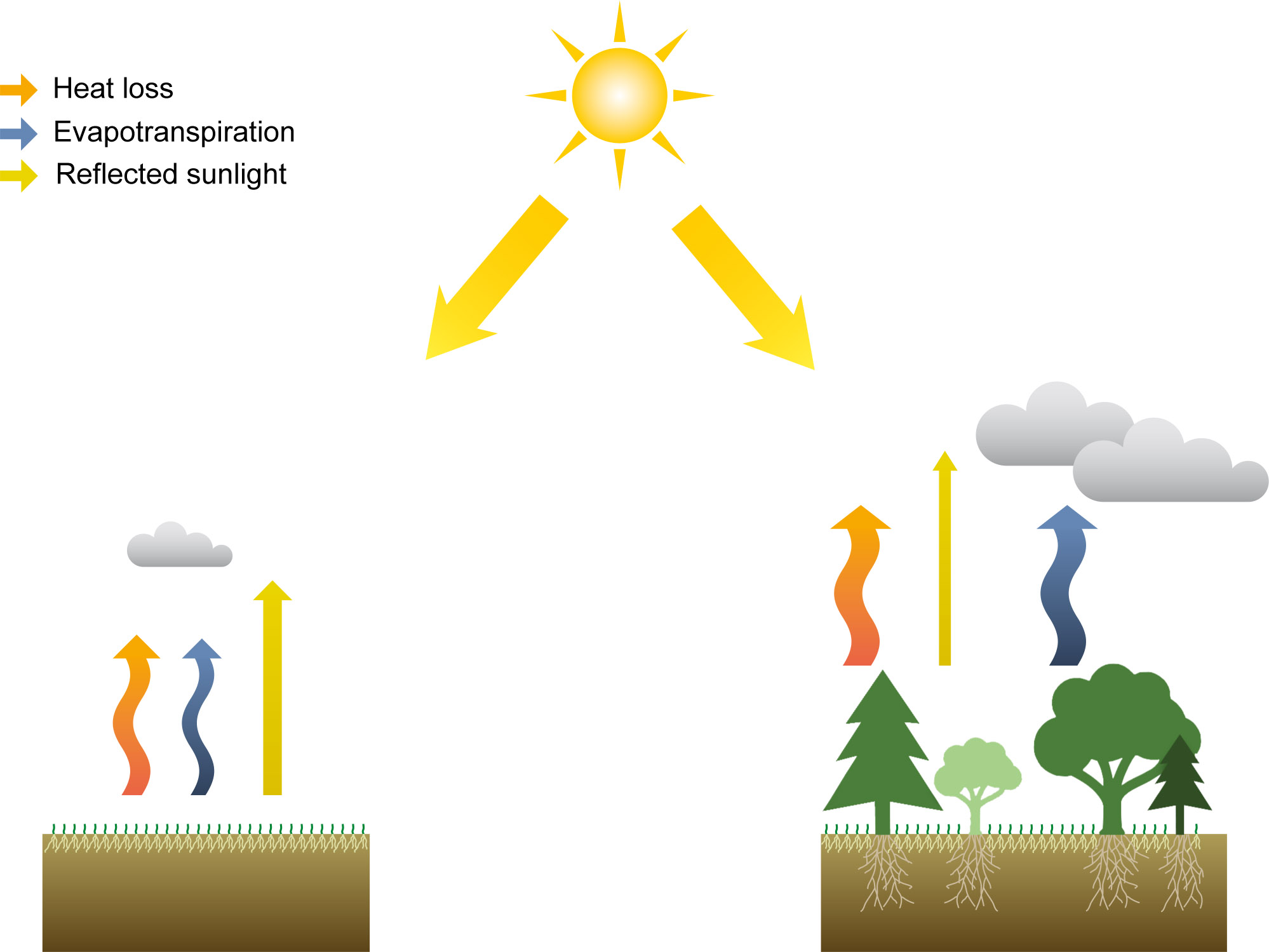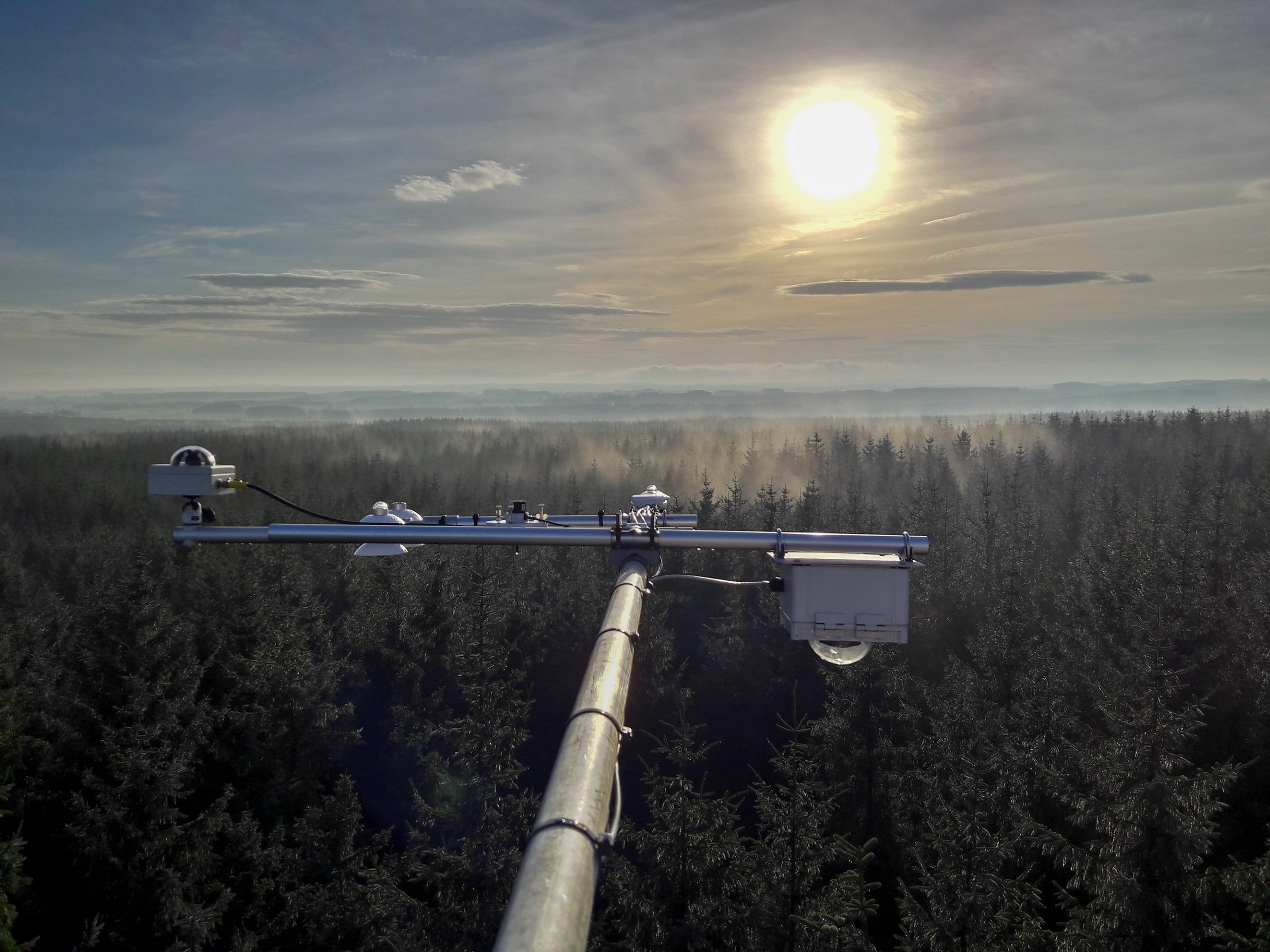How do woodlands and forests affect the climate?
Trees, woodlands and forests are both influenced by the climate, and affect it, at local, regional and global scales.

Afforestation will generally reduce climate change, particularly in the longer term, but the net contribution will depend upon the local climate, how fast the trees grow, the previous vegetation cover and land use, the new forest type and how it is managed.
Trees, woodlands and forests can also help with reducing the impact of the changing climate through providing shade, shelter, flood and erosion protection, and are key to providing diverse habitats for wildlife.
About the series
Aimed at practitioners, the factsheets showcase the breadth of research carried out by Forest Research, sometimes over decades, into how trees and forests are facing the challenges of climate change, and actionable insights into how trees and woodlands can help mitigate the effects of climate change.

